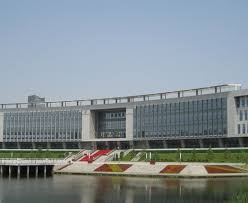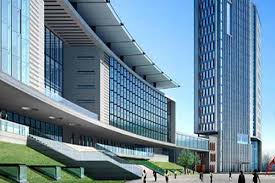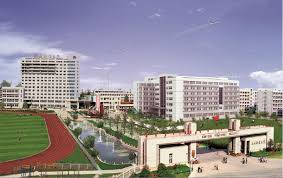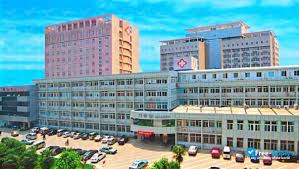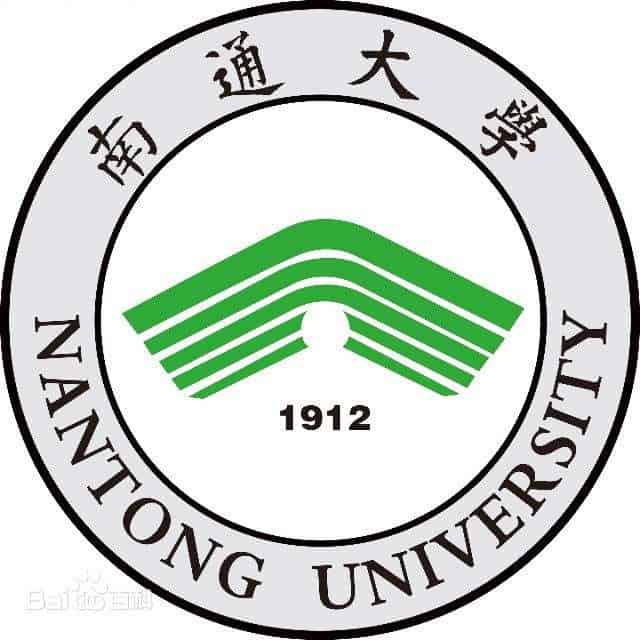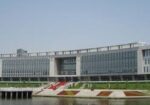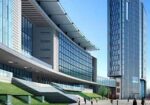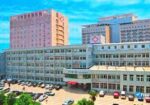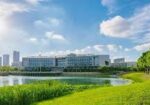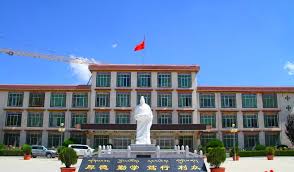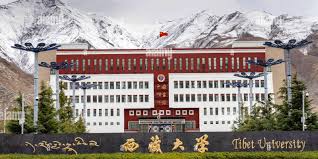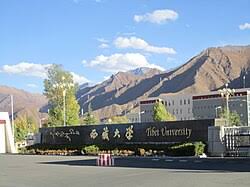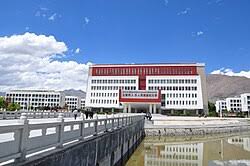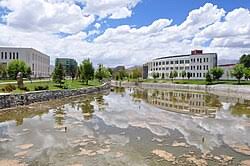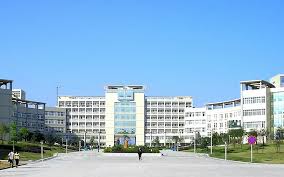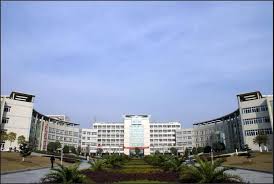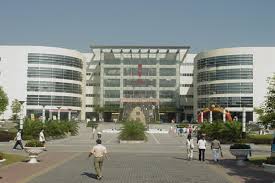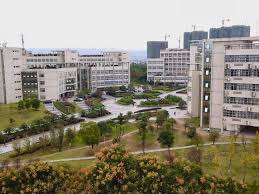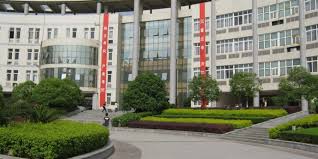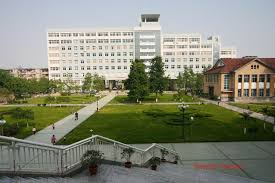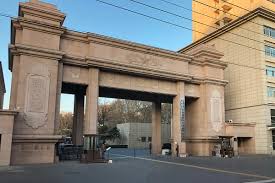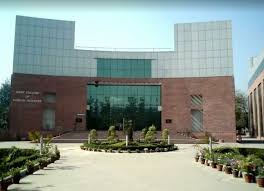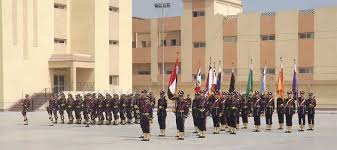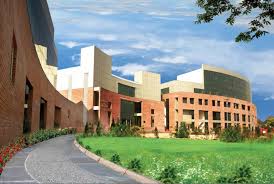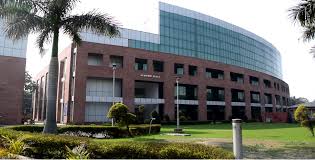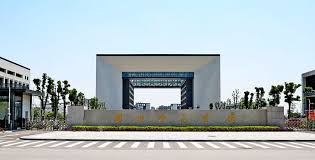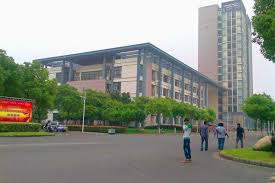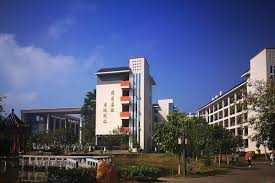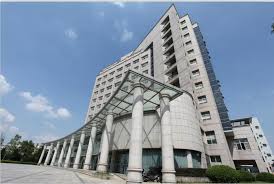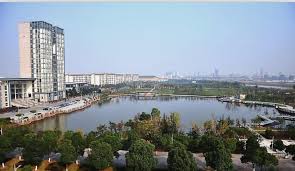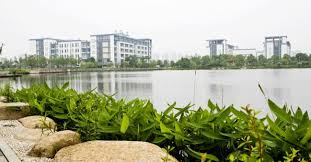Nantong University Medical School “Nantong University,” as it was originally established in 1912 by great industrialist and educator Zhang Jian, has its origin in the founding of private Nantong Medical Specialized School and Nantong Textile Specialized School. In 2004, the university merged Nantong Medical College, Nantong Institute of Technology, and Nantong Normal College to be restructured.
About Nantong University Medical School
According to China University Evaluation 2025 conducted by China Academy of Management Science, Nantong University is 98th in the country, as well as 113th in the ESI comprehensive ranking of Chinese universities. There are 26 schools, one independent college, one affiliated hospital, the School of International Education, and the School of Continuing Education within the university.
It has 7 first-level doctoral degree programs in basic medicine, clinical medicine, public health, and information engineering, and 1 professional doctoral program, 25 first-level master’s degree programs, and 30 professional master’s degree programs. Ten disciplines ranked in the global top 1% in ESI discipline rankings include clinical medicine, neuroscience, pharmacology, molecular biology, and computer science.
Nantong University Medical School – Table of Contents
- About
- Advantages
- Ranking
- Departments And Course Duration
- Facilities And Infrastructure
- Fee Structure
- Required Documents
- Eligibility Criteria
- Admission Process
- Benefits
- Privileges And Benefits for Indian Students
- FAQ’s
With a faculty size of 3,274, of whom 1,697 have senior titles and 1,913 are doctoral or master’s supervisors, the university provides 101 undergraduate programs from ten disciplines, among which are literature, science, engineering, medicine, economics, and law. It currently has approximately 45,000 undergraduate students, more than 6,000 postgraduates, and approximately 1,000 foreign students, with the average annual rate of employment being over 95%.
Nantong University has several state-of-the-art research platforms, including national-local collaborative research centers, national key laboratories of the Ministry of Education and Sinopec, provincial laboratories, engineering centers, and bases of social science research.
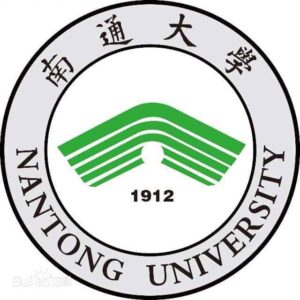
The university has completed almost 600 projects at national level over the last five years. It also has strong international links, with partnerships in 160 universities and research organizations of nations like the United States, Canada, the UK, Germany, France, Russia, Japan, Australia, and Hong Kong, Macao, and Taiwan.
Advantages of studying in Nantong University Medical School
Comprehensive Programs:
The School of Medicine offers a wide range of programs, including basic medical sciences, public health, life sciences, pharmacy, and nursing, making it a comprehensive medical institution.
Experienced Faculty:
The university boasts a strong teaching staff with extensive experience in their respective fields.
State-of-the-art Facilities:
Students have access to world-class laboratories and research facilities, enhancing their practical learning and research capabilities.
Strong Ranking:
Nantong University holds a respectable position both nationally and internationally, with a ranking of 204 at the national level and 1581 globally according to Overseas eduversity.
Other Benefits:
Affordable Tuition:
The university is known for offering relatively affordable tuition fees compared to other institutions.
Support for International Students:
Nantong University has a long-standing program for international students to learn Chinese, with positive reviews of their teaching methods and facilities.
Scholarship Opportunities:
Students can also benefit from the “Jasmine Jiangsu government scholarships,” including those in the field of medicine.
Extensive Network:
The university has 19 colleges and schools, 7 affiliated hospitals, and 70 teaching hospitals, providing a broad network for practical training and experience.
Latest Notifications:
Nantong University Medical School – Ranking
The Foundation’s most senior decision-making body is the Board of Directors, with membership ranging from 10 to 25 members. Directors hold office for four years and are eligible for re-election upon expiry of their term. The President of the Board is charged with calling and chairing meetings, which are held every two years to deliberate and make decisions on issues relating to the Foundation’s operations and strategy.
Supporting the Board of Directors is the Board of Supervisors, who acts as the Foundation’s independent supervisory board. It has 3 to 10 members, who, like the directors, have a four-year term and may also be re-elected. The Board of Supervisors’ main duties are to audit the Foundation’s financial and accounting records and to make sure that all actions and decisions taken by the Board of Directors and its committees are in accordance with appropriate laws, regulations, and policies of the governing association of the Foundation.
Supervisors shall participate in Board of Directors meetings, where they are authorized to pose questions, make proposals, and provide supervision with the aim of ensuring transparency and integrity in decision-making.
In addition, they shall be responsible for reporting important issues or abnormalities to appropriate external authorities, such as the registration and administrative authorities, related to business departments, tax authorities, and accounting supervisory organizations. Through this structure of governance, there is a balance of power, accountability, and compliance with regulatory requirements within the Foundation.
Departments And Course Duration in Nantong University Medical School
Departments & Clinical Programs
The School of Medicine at Nantong University is structured into 14 academic departments and 18 teaching‑research units.
Departments specifically related to the MBBS (Bachelor of Medicine, Bachelor of Surgery) program include:
- Basic Medical Sciences: Anatomy, Histology & Embryology, Physiology, Biochemistry, Pathology, Microbiology, Pharmacology, Immunology
- Clinical Disciplines: Internal Medicine, Surgery, Obstetrics & Gynecology, Pediatrics, Emergency Medicine, Traditional Chinese Medicine, Stomatology, Radiology, Oncology, Rehabilitation Medicine, Forensic Medicine
- Specialized Units: Medical Imaging, Intelligent Medical Engineering, Nautical Medicine, Preventive Medicine, Medical Ethics & Public Health Undergraduate MBBS students also interact with broader units like:
- School of Public Health
- School of Life Science
- Department of Neuroscience
- Department of Navigation Medicine and more.
Duration & Curriculum Structure
- Total Duration: 6 years, which includes 5 years of academic coursework + 1 year (48–52 weeks) of mandatory clinical internship or university-affiliated hospital training.
Year-wise Breakdown:
- Year 1:
- Basic medical sciences (Anatomy, Histology, Embryology, Physiology, Biochemistry)
- Chinese language & culture (compulsory for international students)
- Year 2:
- Microbiology, Pathology, Pharmacology, Immunology, Pathophysiology
- Continued anatomy/physiology/biochemistry reinforcement
- Year 3:
- Clinical medicine introduction: Internal Medicine, Surgery, OB‑GYN, Pediatrics, Epidemiology
- Continued exposure to Pathology & Pharmacology
- Year 4:
- Advanced clinical training: Internal Medicine, Surgery, OB‑GYN, Pediatrics, Emergency Medicine, Traditional Chinese Medicine
- Year 5:
- Further specialization: Stomatology, Radiology, Oncology, Rehabilitation Medicine, and other clinical subjects
- Year 6 / Internship:
- Intensive clinical rotation covering core specialties, including Forensic Medicine
- Practical internships in affiliated hospitals, sometimes in student’s home country
Additional Features & Logistics
- Medium of Instruction: English
- Degree Awarded: MBBS (Bachelor of Medicine & Bachelor of Surgery) upon successful completion and passing graduation exams. International students are often required to pass HSK-Level 3 or 4 Chinese proficiency test for diploma issuance.
- Nantong University is recognized by WHO, and MBBS graduates are eligible for licensing exams such as USMLE, MCI (India, now NMC), PMDC, HPCSA, SCHS, etc..
- The medical school maintains 7 affiliated hospitals and over 50 clinical training hospitals, offering rich exposure during internships.
Latest Updates:
Facilities And Infrastructure in Nantong University Medical School
1. Campus & Infrastructure
- The Medical School is part of Nantong University’s expansive campus spread across four major sites (Qixiu, Zhongxiu, new campus, and Qidong) occupying thousands of acres and nearly 800,000–1,000,000 m² of building space.
- The campus is well‑landscaped with green spaces, modern academic blocks, and dedicated medical school facilitz.
2. Laboratories & Research Centers
- Equipped with state-of-the-art labs including a National Virtual Simulation Teaching Center, a National Experimental Teaching Demonstration Center for Clinical Skills, and multiple specialized research labs and engineering platforms.
- High-end research platforms include national‑local joint engineering centers, key labs under Ministry of Education & Sinopec, provincial engineering centers, and cooperative innovation centers in Jiangsu province.
3. Library & Learning Resources
- The central university library holds around 2.96 million printed volumes, supports more than 60 online databases, offers reading rooms, quiet study areas, and electronic resources in Chinese and English.
- Access to academic journals, e-books, and national resource-sharing courses enhances student research and study opportunities.
4. Hostels & Accommodation
- On-campus dormitories—especially on the Qixiu campus—are offered for international students with AC/non-AC double or single rooms, en-suite bathrooms, wardrobes, desks, Wi‑Fi, and pantry kitchens per floor for self‑cooking.
- Security includes wardens and CCTV. Indian students can opt for an on-campus Indian mess.
5. Dining & Canteen Services
- Multiple cafeterias and canteens serve Chinese and international cuisine, including vegetarian options. Facilities are clean, affordable, and conveniently located near hostels and academic block.
6. Clinical Training & Affiliated Hospitals
- Students undergo clinical rotations and internships at the Affiliated Hospital of Nantong University (a top-tier tertiary hospital with over 1,861 beds and 2,000+ operations annually) and 15 affiliated plus 50+ clinical training hospitals across the region.
- Rotations expose students to a broad spectrum of clinical departments and real-world patient care.
7. Sports & Extracurricular Activities
- Modern sports facilities include basketball courts, football and volleyball fields, badminton and table tennis courts, running tracks, gymnasium, and occasional access to the region’s sports centers like Haimen Sports Centre.
- Students are encouraged to participate in volunteer work, community health outreach, student clubs, cultural exchanges, seminars, and competitions.
8. Student Life & Cultural Support
- A vibrant campus community supports holistic development: academic conferences, cultural festivals celebrating global traditions, seminars, debates, and a range of student organizations.
- Student transport includes shuttle services connecting campus to hospitals and city transport hubs for easy commuting
Official site For Nantong University Medical School: Click Here
Nantong University Medical School – Fee Structure
Nantong University Medical School – China Fee Structure Approximately 30lakhs to 40lakhs
Required Documents For Admission in Nantong University Medical School
- Copy of the Passport.
- Copy of Mark sheets and passing certificates of 10th and 12th class.
- Copy of offer letter
- Birth certificate
- Medical certificate
- 10 Passport size photographs
- The Ministry of External Affairs authorizes all the documents.
- Visa fees
- HIV test documents and results
- NOC from the Public Authority
- Address Proof
- Bank statement of parents or guardians
- Health Insurance
- Covid19 Report
Eligibility Criteria For Nantong University Medical School
- They should have Physics, Biology, and Chemistry as the main subjects of study at the 10+2 level.
- The applicant must have a non-china nationality.
- The age of the applicant must be a minimum of 17 years and maximum of 30 years.
- The applicant must have a good track of academic records.
- The student must be fluent in the English language.
- Students must have completed 10+2 of their education or any equivalent education with a minimum 50% aggregate marks.
Admission Process For Nantong University Medical School
- Apply on the official portal of the college.
- Fill the admission form on the online portal.
- Send the scanned copies of the documents.
- Get the offer letter and keep it safe for future use.
- Pay registration fees for your desired college.
- Apply for the visa after you have paid the college fees and received the confirmation letter.
- Get the visa to study in China.
- Book a flight to China.
- Fly to China and start attending your lectures.
Get more details about the colleges in China: Click Here
Benefits of Studying in Nantong University Medical School
1. Established Reputation & Heritage
- Founded in 1912, Nantong University is one of the oldest institutions in China with a long-standing reputation in medical education.
- Formed through the merger of Nantong Medical College, the university carries forward a century-long tradition of excellence in healthcare training.
2. Global Recognition & Accreditation
- Recognized by the World Health Organization (WHO) and listed in the World Directory of Medical Schools.
- Graduates are eligible to appear for global licensing exams such as:
- USMLE (USA)
- PLAB (UK)
- MCI/NMC screening test (India)
- HPCSA (South Africa)
- SCHS (Saudi Arabia)
- Member of numerous international medical education and exchange programs.
3. Comprehensive Clinical Exposure
- Students get hands-on experience in 7 affiliated hospitals and over 50 teaching/training hospitals, including the Affiliated Hospital of Nantong University, a top-rated Class A tertiary hospital.
- Strong focus on practical and clinical skills, especially during the 6th-year internship.
4. English-Medium MBBS Program
- Offers a 6-year MBBS program entirely in English, tailored for international students.
- Chinese language and culture are taught in early years to ease communication during clinical practice.
5. Advanced Research & Learning Infrastructure
- Home to national-level laboratories, simulation centers, and modern medical research facilities.
- Access to state-of-the-art teaching tools, electronic libraries, and 60+ academic databases.
6. Excellent Campus Facilities
- Modern classrooms, smart labs, simulation hospitals, and digital library resources.
- Comfortable and secure hostel accommodations with optional Indian mess for Indian students.
7. High Graduate Employability
- The university maintains a 95%+ annual graduate employment rate.
- Students receive career guidance, internship support, and overseas collaboration opportunities.
8. International Collaboration
- Nantong University has partnerships with 160+ universities and research institutes across the USA, UK, Canada, Germany, Australia, Japan, Korea, and more.
- Offers exchange programs, joint research, and dual-degree opportunities.
9. Affordable Tuition & Living Cost
- Significantly lower tuition compared to Western countries.
- Cost of living in Nantong city is relatively affordable for international students.
10. Student Life & Extracurricular Activities
- Active student associations, cultural festivals, sports clubs, and academic events.
- Support for personal development through volunteering, leadership activities, and seminars.
11. Indian Student-Friendly Environment
- Large Indian student population with cultural support groups.
- Availability of Indian food, shared accommodation, and mentoring from senior Indian students.
Privileges And Benefits for Indian Students in Nantong University Medical School
1. NMC (MCI) Approved MBBS Program
- Nantong University’s MBBS program is recognized by the National Medical Commission (NMC) of India.
- Indian graduates are eligible to appear for the Foreign Medical Graduate Examination (FMGE/NExT) after completing their degree.
2. WHO & WDOMS Listing
- The university is listed in the World Directory of Medical Schools (WDOMS) and recognized by the World Health Organization (WHO), allowing Indian students to pursue global licensing exams.
- USMLE (USA)
- PLAB (UK)
- AMC (Australia)
- HPCSA (South Africa)
- SCHS (Saudi Arabia)
3. Affordable Tuition & Living Cost
- The MBBS program costs significantly less than private medical colleges in India.
- Living expenses in Nantong are moderate, with options for shared accommodation and affordable food services.
4. Internship Flexibility
- The final year (6th year) internship can be completed in China or India, subject to NMC norms.
- Students gain clinical exposure in Nantong University Affiliated Hospital and 50+ training hospitals.
5. English-Medium Instruction
- The MBBS course is entirely taught in English, eliminating the need for students to master Mandarin for academic learning.
- Basic Chinese language classes are provided to help in clinical interaction during internships.
6. Indian Food Availability
- The campus and nearby areas offer Indian mess and restaurants catering to vegetarian and non-vegetarian preferences.
- Hostel kitchens are available for self-cooking.
7. Comfortable Hostel Accommodation
- Indian students are provided with on-campus hostel facilities (double/shared rooms), with amenities like:
- Wi-Fi, study desks, private bathrooms, laundry, and 24×7 security.
8. Established Indian Student Community
- There is a strong Indian student network at Nantong University that helps new students with:
- Cultural adaptation
- Academic guidance
- Visa and travel assistance
- Mentorship for FMGE/NExT preparation
9. FMGE/NExT Preparation Support
- Access to online and in-person coaching resources for Indian licensing exams.
- Senior Indian students often form study groups and assist juniors in preparation.
10. Cultural Inclusiveness & Events
- The university hosts events like Diwali, Holi, Indian Independence Day, and other Indian festivals with participation from students and faculty.
- Regular cultural exchange and celebration events help Indian students feel at home.
11. Easy Travel & Visa Assistance
- The university provides complete support for student visa applications, extensions, and residence permits.
- Nantong is well-connected to major cities like Shanghai (just a few hours away by train), making international travel convenient.
FAQ’s
Can Indian students take the FMGE (Foreign Medical Graduate Examination)?
As Nantong University is NMC approved, graduates are eligible to appear for FMGE/NExT after completing the MBBS course.
Is Indian food available on campus?
Indian mess and restaurants are available on or near the campus. Self-cooking options are also accessible in hostels.
Is Nantong University Medical School recognized globally?
It is listed in the World Directory of Medical Schools (WDOMS), recognized by WHO, and approved by the NMC (formerly MCI) for Indian students.
Are there Indian students currently studying at the university?
There is an active Indian student community, and many seniors assist with FMGE preparation, cultural adjustment, and mentorship.
How safe is the city of Nantong for international students?
Nantong is considered a safe and student-friendly city with a peaceful environment and low crime rate.
Is internship mandatory in China?
Internship is part of the final year. Indian students may complete it in India or China (check with the current NMC guidelines).
Also Check:

